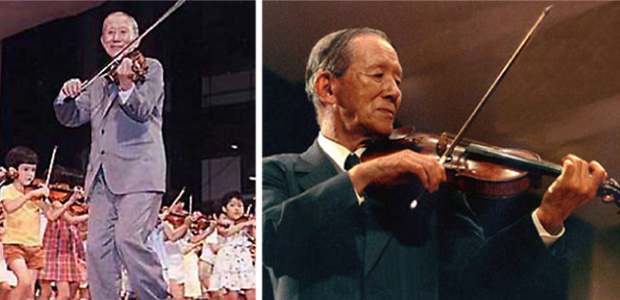Jennifer is in great demand as a violin teacher. Her students range in age from children as young as 3 years old to adults. She is a member of the violin faculty at the JCC Miles Nadal Suzuki Program and Royal Conservatory of Music. Jennifer currently offers online lessons privately, offering preparation for RCM examination and various music festivals. Her teaching style readily adapts to the needs of the individual student. Her instruction of young children is primarily through the Suzuki Method. Part of the instruction offered includes improvisation, using the Creative Ability Development method. In addition to her 15 years of experience as a violin teacher, she holds a Bachelor’s and Master’s of Music Performance Degree from UofT, an Artist Diploma from the Glenn Gould School, is a teacher trainer in the Creative Ability Development method, and is certified through Books 1-8 by the Suzuki Association of the Americas.

“Any child who is properly trained can develop musical ability, just as all children develop the ability to speak their native tongue.” – Dr. Shinichi Suzuki
What is the Suzuki Method?
The Suzuki Method is based on the same philosophy and pedagogical techniques every nationality has used for centuries to teach children their mother tongue. When a child is born, the parent and the society have an unwavering belief that the child will one day learn to speak the language that surrounds him or her. The Suzuki Method promotes this same belief in the field of music pedagogy stating that “Every Child Can” learn to play an instrument. This faith in the musical potential of each child is accompanied by the acceptance of the child progressing at an individual pace. This is a natural phenomenon that we readily accept when a child learns to speak, and should be as readily accepted in a mother tongue approach to music education. This approach creates a positive, encouraging environment conducive to learning.
Just as parents play a major role in their child’s language learning, the Suzuki Method encourages an active, consistent role of the parent as the “home teacher”. This concept is represented by the “Suzuki triangle”, an equilateral triangle that is used as a visual reminder of the support and communication between parent, teacher, and child. Parents are asked to take notes in lessons and in some cases to learn the instrument along with the child in order to facilitate the daily home practice and to nurture the child’s natural tendency to imitate and repeat. It is also expected that the child be raised in an environment that immerses the child in music. Daily listening is required, just as the child hears the language being spoken in the home daily. Ideally, the child would be introduced to music listening in the first days of life so that it becomes part of a daily habit, rather than something that is squeezed in to an already busy schedule filled by school and extra-curricular activities. Continued daily listening of the Suzuki repertoire and other classical pieces are necessary throughout the child’s music education in order to facilitate the learning of repertoire and to encourage a life-long appreciation of music and all the beauty life produces. This heavy reliance on listening and ear training makes it possible to delay learning to read music. In language education, it is customary for the child to learn to speak before they learn to read words. Likewise, Suzuki applies this principle by having the child develop a musical vocabulary first with thorough instruction in posture, tone production, intonation, and other key skills involved with the particular instrument he or she is learning. Anyone who has ever tried will agree that it is much harder to learn how to play the violin than to learn how to read music. In fact, Suzuki students emerge from the Suzuki program ready to tackle any problem with the management skills they have learned from their early training. The focus and concentration developed by the three and four year old children helps these children beyond their music education and touches upon every aspect of their lives. This focus is developed in very small, manageable steps. The Suzuki lesson is based around one teaching point that is internalized by a variety of exercises practiced in repetition.
Other aspects of the Suzuki program are the repetition or accumulation of the repertoire and the sharing and observing developed in the group lessons. Repetition is a tool used in language pedagogy from the very first time the child hears “say mama” and well beyond the proud day that word is uttered. The word also is not discarded from the child’s vocabulary once it has been said correctly once. The early Suzuki pieces are used as exercises to help develop new skills as the child progresses. The common repeated repertoire also serves as connective tissue between the beginning children and the intermediate and advanced children. When the repertoire is repeated in a group lesson, the more advanced children are given a chance to show their leadership thereby providing an inspirational model for the younger children as well as an overall sense of community. This community is felt globally among the Suzuki world. The group lessons reinforce skills taught in private lessons and promote social skills. The group lessons also introduce the child to a world of ensemble playing, teamwork, and sensitivity to the needs of others that is crucial in the music profession and every other profession.






